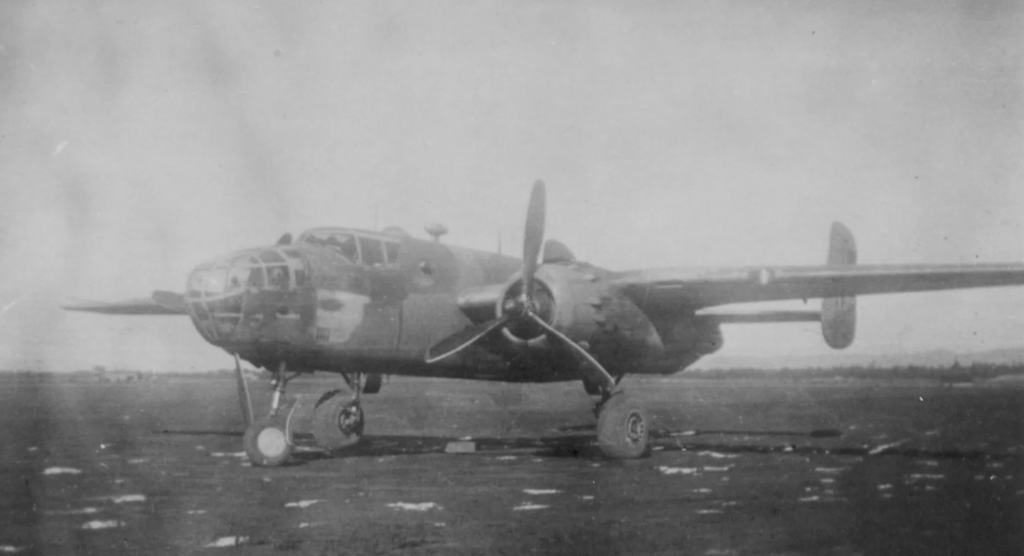From Wikipedia:
The North American B-25 Mitchell is an American twin-engine, medium bomber manufactured by North American Aviation (NAA).
The design was named in honor of Major General William “Billy” Mitchell, a pioneer of U.S. military aviation. Used by many Allied air forces, the B-25 served in every theater of World War II and after the war ended many remained in service, operating across four decades. Produced in numerous variants, nearly 10,000 Mitchells rolled from NAA factories.[1]


Flight characteristics
The B-25 was a safe and forgiving aircraft to fly.[17] With one engine out, 60° banking turns into the dead engine were possible, and control could be easily maintained down to 145 mph (230 km/h). The pilot had to remember to maintain engine-out directional control at low speeds after takeoff with rudder; if this maneuver was attempted with ailerons, the aircraft could snap out of control. The tricycle landing gear made for excellent visibility while taxiing. The only significant complaint about the B-25 was the extremely high noise level produced by its engines; as a result, many pilots eventually suffered from varying degrees of hearing loss.[18]
The high noise level was due to design and space restrictions in the engine cowlings which resulted in the exhaust “stacks” protruding directly from the cowling ring and partly covered by a small triangular fairing. This arrangement directed exhaust and noise directly at the pilot and crew compartments.
